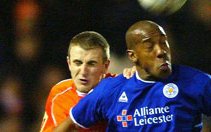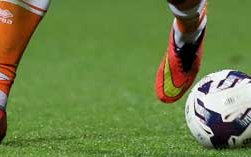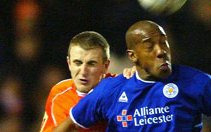SeasideEssexXile tells you all you need to know ahead of Saturday’s trip to Peterborough United
London Rd – Peterborough
By SeasideEssexXile
A blip`s a blip. We`ve rode our luck recently but over the last couple of games it seems to have disappeared as quickly as an Oyston depositing a hefty cheque. Peterborough provides an opportunity to kick us back on track whilst singing the praises of Agent Fergie – Well played son, Job Done.
How To Get There
M55, M6 South. J31 join the M61 then the M60 on to the M62. Leave the 62 at J32a and join the A1 South. Exit the A1 at signpost ‘Leicester, Peterborough North A47’. Turn left at T-junction onto the A47. Exit the A47 after 5 miles, at junction 15. At the roundabout turn right onto the A1260 Nene Parkway. Exit the Nene Parkway after 1 mile. At the mini-roundabout by the ‘Gordon Arms’ turn left onto the A605 Oundle Road. The grounds within sight and Fair Meadow car park is on the left-hand side after one and a half miles (£5 for 10hrs).
For The sat navvers – PE2 8AL
For the Virgin Lovers amongst us – Peterborough station is a mile away .
Turn right out of station and head towards the main road (Bourges Boulevard). Turn right and head towards the big roundabout. Go under the Railway Bridge and walk up the path or steps to main road. Use the pedestrian underpass and pass the Evening Telegraph on the left-hand side. At the traffic lights, turn right and the ground is situated on the left hand side over the town bridge.
For those flying Samm airways Wittering is the nearest airport.
The Ground
Football has been played at London Road home for over a century.
The ground has a capacity of 15,314 and bears no resemblance to the ground seen into the 20th century by Peterborough City before Peterborough and Fletton United enjoyed a successful run until collapsing in financial disarray during 1932.
Following formation in 1934, present club Peterborough United took over a City Council-owned ground little changed since the turn of the century with a single wooden stand seating no more than 250 and raised earth banks behind either goal.
The City Council backed the new club by building brick dressing rooms and a committee room at the back of the wooden stand and this served right through until the late 1950s and construction of the present North Stand. In their early seasons of Midland League football Posh attracted crowds of between three and four thousand and it took a boxing promotion to set an attendance record in the summer of 1939.
During the early war years with Posh restricted to playing friendlies, income dwindled and with the club unable to pay its rent, Peterborough City Council threatened to terminate the ground lease. In 1942 it looked like the end when a local factory sports club offered to take a 10 year lease. Posh owed £50 in rent and were saved only when two individuals came up with the money. After the Second World War terracing and a covered shelter were provided at the London Road end, although the narrow Glebe Road side was still stepped with re-cycled railway sleepers and partially covered by a shelter erected at the Moyes End in 1939.
Later the Council negotiated a long term lease and eventually sold London Road to Peterborough United for a nominal sum during the 1950s, although with the built-in safeguard of covenants restricting the use of the area for anything but a sports stadium.
London Road, as it is today, really began to take shape in the early 1950s with the driving force behind the development and most of the money coming from a flourishing Supporters’ Club. Parent club share capital was doubled to £4,000 by the creation of an extra 8,000 five shilling shares which were eagerly snapped up.
A development fund was jointly set up by Posh and the Supporters’ Club and various fund raising schemes included one in which fans could by a brick for half a crown. A first project in 1953 was new covered terracing behind the Moyes End goal with a matching facility following within a couple of years behind the London Road End goal.
By 1956, the steelwork for the pitch long main stand was taking shape behind the old wooden stand and the new stand, with over 2,404 seats and standing enclosures in front, was opened for the 1957-8 season. The old stand was demolished and throughout that campaign the pitch remained in its old position before being moved some 30 yards north.
This allowed a new standing terrace to be created on the Glebe Road side which later had four executive boxes, topped by a television platform, erected at the back. The modern look to London Road had been completed in February 1960 when Arsenal provided the opposition in a game to officially launch the ground’s first floodlights, the actual switch on ceremony being performed by Football League chairman Joe Richards.
After Posh gained Football League admission in 1960, attendance records crept well past the 20,000 mark with a new high of 30,046 for FA Cup action against Arsenal early in 1965. Then, for the next round against Swansea, this increased to a now never to be equalled 30,096.
When Posh gained promotion to the new First Division after a Wembley play-off success in 1992, seated capacity was below the levels required by the Taylor report and the shortfall was solved by converting the Main Stand’s standing enclosures with around 700 seats bought second hand from Leicester City, when they re-developed one of the Filbert Street stands, and with a further 300 seats from Millwall’s Old Den.
Then with 3,605 seats, the Main Stand’s facilities were considerably extended to include a full time pub, executive and conference areas and a large retail shop, plus commercial outlets including a hair and beauty salon and a Betting Shop. A former Supporters’ Club bar area was also extended to create office accommodation for the local Probation Service.
By the mid-1990s Posh were looking to provide even more seats by building a completely new 5,000 capacity stand on Glebe Road side. The contract worth £1.4 million went to Lincoln contractors Linpave who had completed similar projects for Lincoln City and Burnley. The Football Trust contributed around £900,000 and the old terraces were demolished in the summer of 1995 and the new stand was brought into use for the final few games of the 1995-96 season.
Initially sponsored by mail order specialists Freemans, it became the Thomas Cook Family Stand before the start of the 1999-2000 season.
Then London Road and Moyes End terraces, little changed since completion in the 1950s, were re-roofed and fitted with extended crush barriers to comply with increased safety requirements.
The 2001 close season saw the pitch receive its biggest make-over since being moved in the 1950s. The entire playing surface was removed, two kilometres of new drainage pipes laid and covered with 500 tones of gravel and sand. Fresh top soil was then laser graded before being re-seeded.
Next on the Posh agenda is improvement to the floodlighting system. Only two of the four original pylons now remain with lights on the south side of the ground, along the front of the Family Stand. This structure is now being strengthened to take a greater number of new lights at a higher level and new lights will also go on the remaining towers.
Just under 4,000 away fans can be accommodated in the Moyes Terrace, with a further 800 seats being made available to away fans in the Main (North) Stand. I`d like to think this can shut up the stand up sit down debate for 1 game at least.
Where to Drink
Last time here I drunk in the Cherry Tree. Ironically guests also in the tree that day included the O`s enjoying a meal with Nigel Worthington of all people, oh how we`ve come on.
Other pubs include the Peacock (nearest to the ground), The Palmerston Arms, Charters and the Brewery Tap.
Plod & Stewards
o trouble inside the ground on my last visit although for some reason it was a little leery outside the ground.
Fear Factor Rating -1.
Peterborough fell foul to Mill***k midweek, and whilst we lost a game after scoring first, for the first time this season to keep the ball rolling we need a win. Last time we played here a party atmosphere prevailed, forget the fancy dress, forget the fancy dans just put the ball in the onion bag and we`ll try to repeat the same ending as we had a couple of years ago where the only tears we cried were those of joy.
Onwards + Upwards



